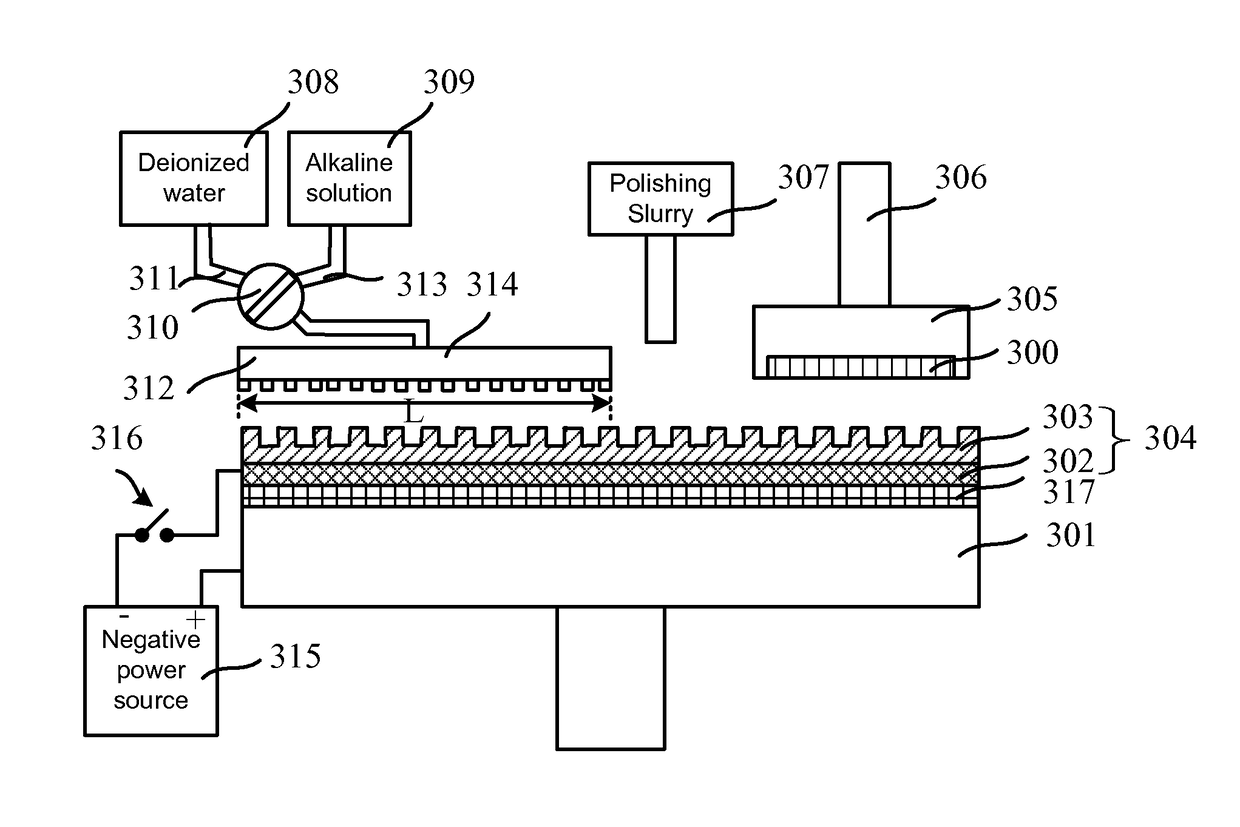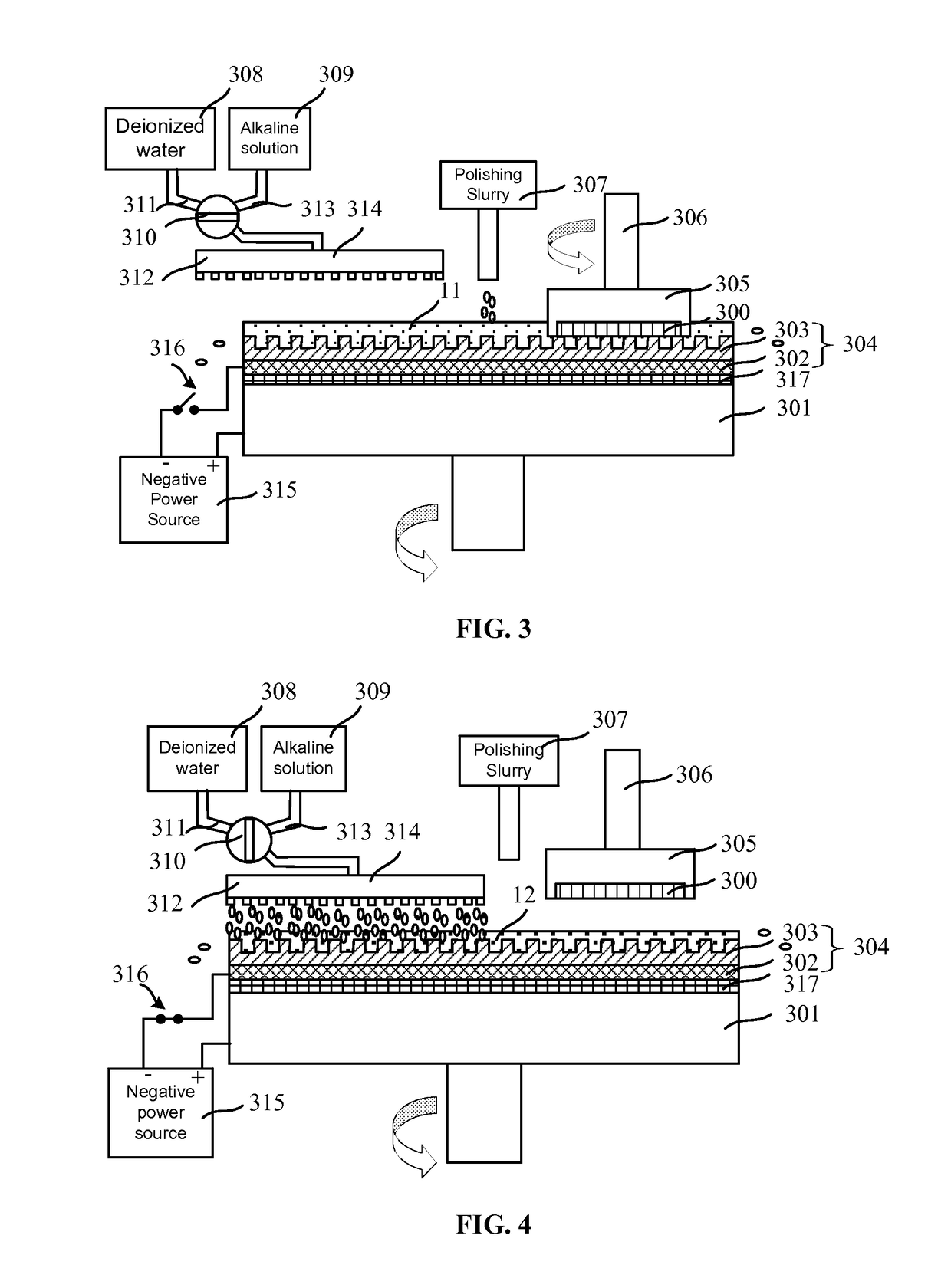Chemical mechanical planarization apparatus and methods
a mechanical planarization and chemical technology, applied in the direction of manufacturing tools, lapping machines, electric circuit machining, etc., can solve the problems of deteriorating the formation of patterns, such as devices, and structures
- Summary
- Abstract
- Description
- Claims
- Application Information
AI Technical Summary
Benefits of technology
Problems solved by technology
Method used
Image
Examples
Embodiment Construction
[0016]Reference will now be made in detail to exemplary embodiments of the invention, which are illustrated in the accompanying drawings. Wherever possible, the same reference numbers will be used throughout the drawings to refer to the same or like parts.
[0017]As a consumable supply of a CMP process, a polishing slurry may have a significantly important effect on the planarization results of the CMP process. The polishing slurry may normally consist of polish particles and chemical additives, etc. A microscopic view of the CMP process may include a chemical process and a physical process. During the chemical process, a chemical reaction may happen between the chemicals in the polishing slurry and the to-be-polished layer on a wafer; and easy-be-removed products may be produced by the chemical reaction. During the physical process, physical scratches may happen between the polishing particles and the to-be-polished layer; and the products from the chemical process may be removed. Th...
PUM
| Property | Measurement | Unit |
|---|---|---|
| voltage | aaaaa | aaaaa |
| width | aaaaa | aaaaa |
| voltage | aaaaa | aaaaa |
Abstract
Description
Claims
Application Information
 Login to View More
Login to View More - R&D
- Intellectual Property
- Life Sciences
- Materials
- Tech Scout
- Unparalleled Data Quality
- Higher Quality Content
- 60% Fewer Hallucinations
Browse by: Latest US Patents, China's latest patents, Technical Efficacy Thesaurus, Application Domain, Technology Topic, Popular Technical Reports.
© 2025 PatSnap. All rights reserved.Legal|Privacy policy|Modern Slavery Act Transparency Statement|Sitemap|About US| Contact US: help@patsnap.com



